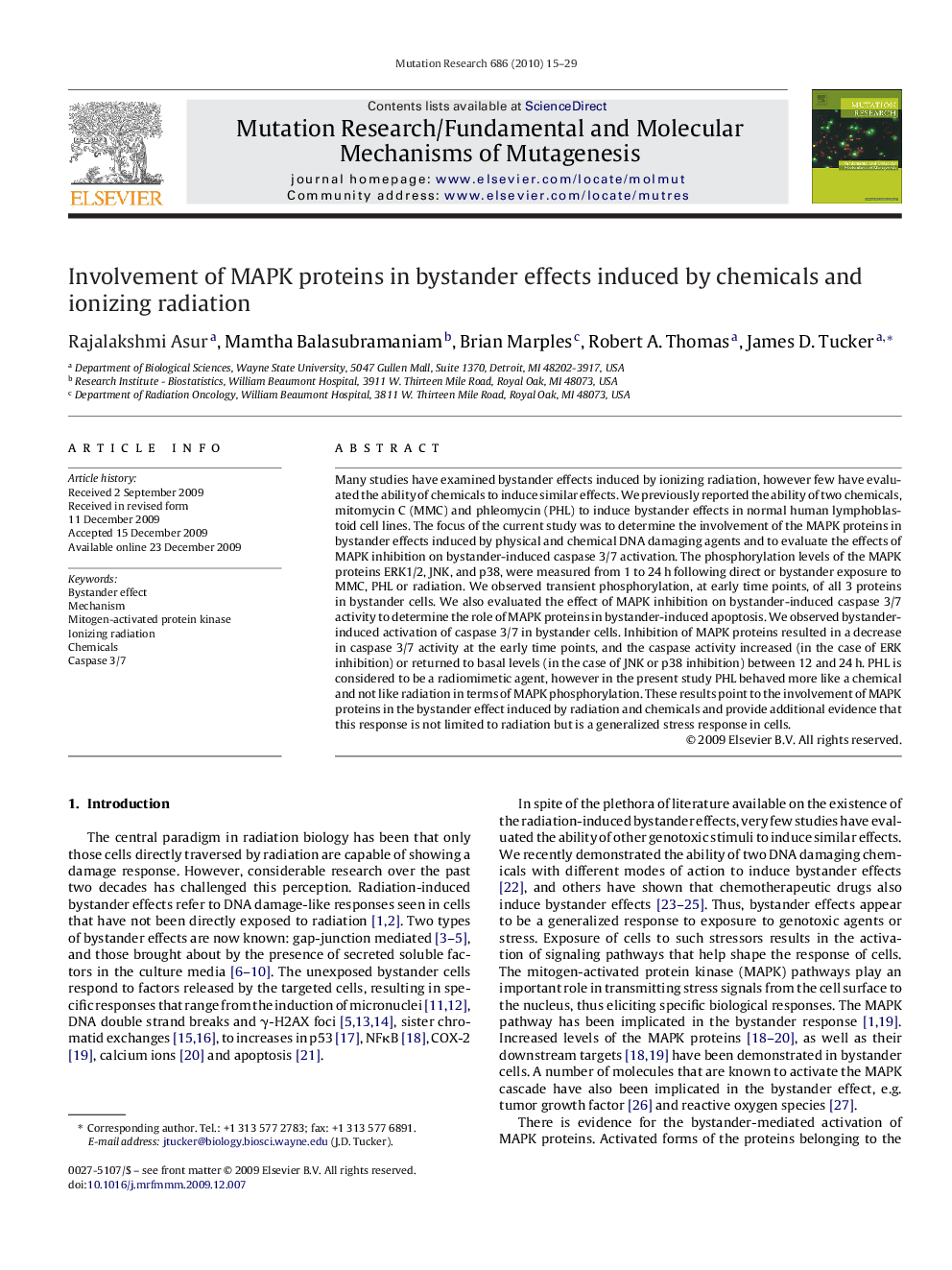| Article ID | Journal | Published Year | Pages | File Type |
|---|---|---|---|---|
| 2146858 | Mutation Research/Fundamental and Molecular Mechanisms of Mutagenesis | 2010 | 15 Pages |
Many studies have examined bystander effects induced by ionizing radiation, however few have evaluated the ability of chemicals to induce similar effects. We previously reported the ability of two chemicals, mitomycin C (MMC) and phleomycin (PHL) to induce bystander effects in normal human lymphoblastoid cell lines. The focus of the current study was to determine the involvement of the MAPK proteins in bystander effects induced by physical and chemical DNA damaging agents and to evaluate the effects of MAPK inhibition on bystander-induced caspase 3/7 activation. The phosphorylation levels of the MAPK proteins ERK1/2, JNK, and p38, were measured from 1 to 24 h following direct or bystander exposure to MMC, PHL or radiation. We observed transient phosphorylation, at early time points, of all 3 proteins in bystander cells. We also evaluated the effect of MAPK inhibition on bystander-induced caspase 3/7 activity to determine the role of MAPK proteins in bystander-induced apoptosis. We observed bystander-induced activation of caspase 3/7 in bystander cells. Inhibition of MAPK proteins resulted in a decrease in caspase 3/7 activity at the early time points, and the caspase activity increased (in the case of ERK inhibition) or returned to basal levels (in the case of JNK or p38 inhibition) between 12 and 24 h. PHL is considered to be a radiomimetic agent, however in the present study PHL behaved more like a chemical and not like radiation in terms of MAPK phosphorylation. These results point to the involvement of MAPK proteins in the bystander effect induced by radiation and chemicals and provide additional evidence that this response is not limited to radiation but is a generalized stress response in cells.
